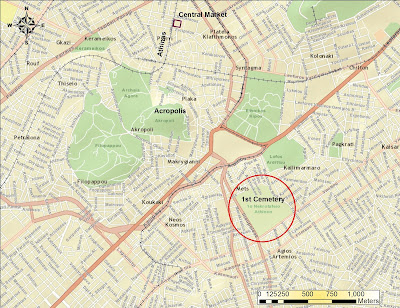

Nafplio (Modern Greek: Ναύπλιο, Nafplio) is an ancient city that has been occupied, decayed, and revitalized many times. It is located in the Peloponnese region of Greece at the head of the Argolic Gulf. As described in the Blue Guide Greece, "Its delightful situation near the head of the Argolic Gulf and its splendid examples of late-medieval military architecture make it one of the most attractive in Greece. Originally walled, the quiet city huddles along the north slopes of a small rocky peninsula, crowned by the citadel of Its-Kale (279 ft), towards which narrow streets, lined with old houses attractively balconied and shuttered, rise from the quay." Nafplio is about 4 hours drive from Athens and is a quiet alternative if you want to avoid the frantic city.




For a first-time visitor, I suggest you forego the cafes and whiskey bars along the trendy waterfront and tour the upper city, built on the slopes below the Venetian Palamidi fortress. The ancient houses cling to the hillside, overgrown with luxurious grape vines and orange trees.

This is one of the earliest maps of Nafplio, showing the city before 1540, when still in Venetian possession (map dated ca. 1571-75, Venice; from the Wikimedia Commons).

Following the Venetian era, the Peloponnese was part of the Ottoman empire. An occasional old Turkish fountain provides evidence of the centuries of Turkish rule.


The view into the city is a melange of clay roofs, gables, church towers, private terraces, ancient trees, antennas, and solar panels.

This large dome was once part of a mosque, but was converted to a church after Greek Independence in 1821. You can see where one of the minarets emerged from the corner.

Continuing the walk of the upper town, look at this amazing wall. The massive cut stones are Cycladic in origin (early-mid Bronze age, or older than 2000 years BCE). The crude smaller stones are much newer, clearly evidence of how old construction has been included in the modern. Notice how the Cycladic stones do not have any mortar and were fit with amazing precision. Imagine if here in USA we could casually include 4000-year-old walls into the edge of a lane.
In the next blog entry, we will explore the lower city.
Photographs taken with an Olympus E-330 digital camera with Olympus 14-54 mm f/2.8-3.5 lens (superb optic).











